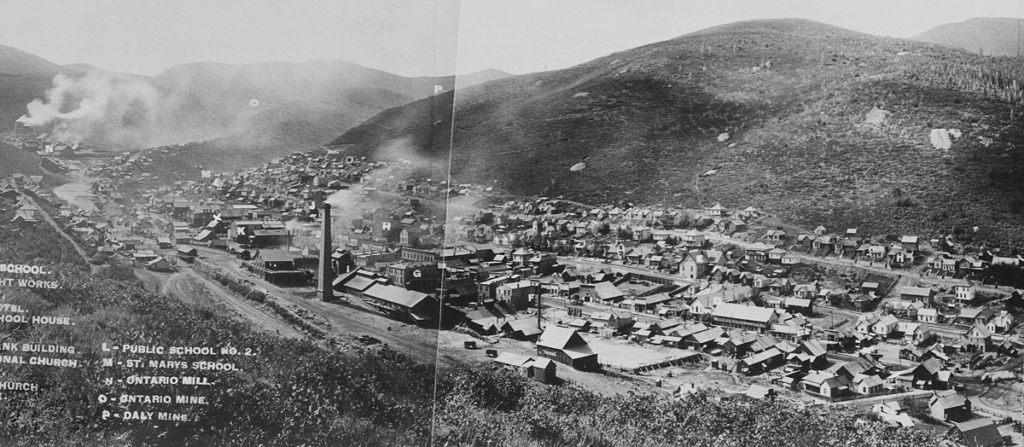Everyone parking off Swede Alley behind the Marsac Municipal Building should know there are two remnants of early mining history in plain sight!
To the left of the Marsac building is a stone wall with square notches that was part of the back wall of the Marsac Mill foundation. At the other end of the parking lot towards KPCW is a stone archway, also part of the original wall. The center part was removed when Marsac School was constructed in the 1930s.

Credit: Park City Historical Society and Museum, Nancy Schmidt Collection
To understand the history of these remnants, let’s go back to 1873: the area we call Park City was lush with wildflowers and abundant trees; President Ulysses S. Grant was beginning his second term; the Jesse James Gang was robbing trains in the West; and Utah was twenty-three years from statehood when Eastern newspapers reported on “sensational” discoveries of silver in the Wasatch Mountains.
These stories attracted the attention of some speculators from Grand Haven, Michigan. Known as the Michigan Bunch, they were successful businessmen who’d mined Michigan’s Upper Peninsula. Unafraid of risk, they understood that cornering an evolving market meant go big, and fast.
In 1874 they filed a patent with the US Land Office for 120 acres of “unappropriated and unoccupied land” comprising the area we now call “Old Town.”
They also purchased the Flagstaff Mine for $50,000. Flagstaff was the first mine in Park City to ship ore, sending 40 tons by wagon to Echo City, approximately thirty miles away. Echo was originally a stopover along the Mormon Trail. With the 1869 arrival of the transcontinental railway, Echo became an important staging town for burgeoning mines of Park City.
The Michigan Bunch’s strategy was twofold: dominate mining and monopolize ore processing. Transportation of ore was expensive, time consuming and weather-dependent. Imagine the impact of rain and snow on dirt roads with a heavily loaded horse-drawn wagon! The solution? “Reduce” the ore to its most valuable essence before shipping. Thus the Michigan Bunch constructed a mill to “concentrate” ore.
The Marsac Mill opened in 1874 and dominated the landscape of the growing town. It was self-sufficient, featuring its own steam power plant, blacksmith and machine shops. It was one of the first properties with electric lights (installed in 1886).
Ore was crushed and reduced using massive weights or “stamps,” significantly decreasing shipping costs. The mill featured twenty to thirty stamps and operated twenty-four hours a day. The sound would have been deafening.
With the first and only mill in the district, the Michigan Bunch concentrated ore from their own Flagstaff Mine and, for a hefty fee, other mines.
However, their monopoly was short lived. Other mines – notably Ontario and Silver King – developed and built their own mills to control costs. By 1904 the Michigan Bunch had ceded their once-dominant position and moved on. The mill was dismantled.
Take a close look at the wall that remains. It survived almost 150 years to tell us the genesis of our town. Can you hear the stories?